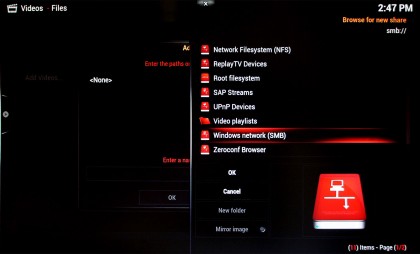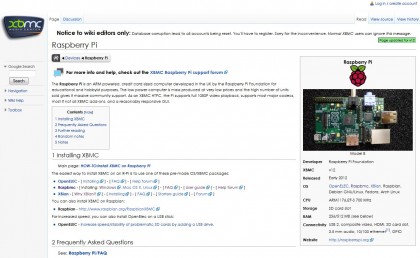5. Select wireless

This is a handy time to mention USB wireless adaptors - the one failing of the instructions. This omission is a shame, because XMBC comes with a configuration tool built in, if you know it's there.
To configure a wireless adaptor you need to select the 'Programs > Raspbmc Settings' tool. It has a 'Networking' section where you can switch from 'Wired' to 'Wireless', then set the SSID name of your wireless network and add the password alongside, selecting the correct encryption.
6. Adding a media source

XMBC works best if it can link to a network share, UPnP device, NAS or attached media drive. If you add this as a source, it'll automatically create a linked library to whatever TV, film, music and images it finds in there. Select 'Video > Files > Add Videos'... and use 'Browse' to choose the source folder. You can add multiple sources from different places.
7. Performance

Our passing play with Raspbmc showed it happily handling HD content when played off USB storage. This included 1080p video with DTS audio, which is impressive for such a device.
Less impressive was wireless performance, which played 720p YouTube streams, but failed any of our HD content - even basic 720p h.264 clips. We'd suspect the actual wireless connection, but this was in an environment where other device happily streamed the same content.
Streaming SD content worked a treat. A VC-1 hardware decoder codec is available for just £1.20, and this supports any Blu-ray-based content.
8. Create your own Raspberry Pi XMBC

You can and may want to create your own SD-booting XMBC OS. The XMBC project maintains a list of compatible Raspberry Pi builds on its wiki. The version bundled with this pack is from Rasbmc and it's supplied as a single download file, which you extract and install to your SD card. It's no more complex than that with installers available for PC and Mac.
Sign up to the TechRadar Pro newsletter to get all the top news, opinion, features and guidance your business needs to succeed!